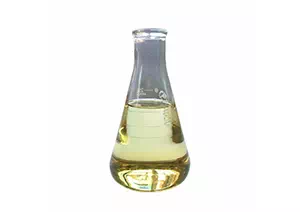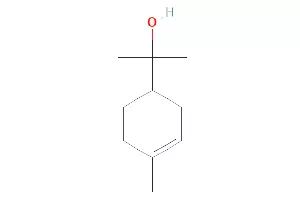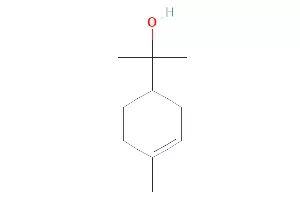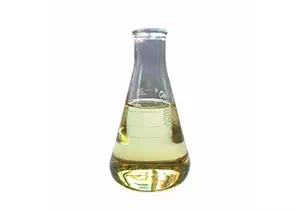Terpineol Information
Chemical Name: | Terpineol |
Other Name: | Tung oil; Turpentine terpene alcohol |
CAS: | 8000-41-7 |
EINECS: | 232-268-1 |
Type: | Food additives; Flavors and fragrances; Inorganic chemicals |
Molecular Formula: | C10H18O |
Molecular Weight: | 154.25 |

Terpineol description
Terpinol, also known as tung oil, is a monocyclic monoterpene alcohol compound. Its physical form appears as a colorless to slightly yellow liquid, which has a slight sense of viscosity and sometimes exists in the form of transparent crystals. Chemically, terpinol has three distinct isomers, which are α-terpinol, β-terpinol, and γ-terpinol. Of the three isomers, alpha-terpinol is the most prevalent in nature. Chemically, alpha-terpinol is classified as a monoterpenoid alcohol, meaning that it contains a chiral carbon atom in its molecular structure. This chiral center enables the existence of two optical isomers, left - and right-handed, of alpha-terpinol, and these isomers can be extracted from different kinds of plant essential oils.
The optical activity of α-terpinol has a decisive effect on its function and application. In the flavor field, the left-handed form of alpha-terpinol gives a cooler feeling, while the right-handed form gives a fresher experience. In addition, the two isomers also show significant differences in medical use. Studies have shown that D-α-terpinol has a stronger ability to kill parasites than the L-isomer. Most of the commercial terpinol currently on the market exists in racemized form, that is, contains equal amounts of left - and right-handed alpha terpinol. The quality of this racepterpinol is mainly determined by the content of α-terpinol, and its optical rotation properties are not fully utilized.
Terpinol is found in a wide variety of essential oils, such as bay oil, rosemary oil, star anise oil, sage oil, juniper oil, turpentine oil, cardamom oil, sweet orange oil, pine needle oil, geranium oil, eucalyptus oil, and nutmeg oil. In particular, it is worth mentioning that in some specific plants, such as turmeric essential oil, the content of terpinol can reach 500ppm; In white cardamom seeds, the content of α-terpinol was as high as 9600ppm, indicating the rich diversity and potential value of this compound in different plant sources.

Terpineol Properties
Melting point | 18°C |
Boiling point | 213-218 °C (lit.) |
density | 0.934 g/mL at 20 °C (lit.) |
vapor pressure | 3 hPa (20 °C) |
refractive index | 1.481-1.486 |
Fp | 95°C |
storage temp. | Store below +30°C. |
solubility | ethanol: soluble1.25ml/10ml, clear to slightly hazy, colorless to light yellow (50% ethanol) |
form | Liquid |
color | Clear colorless to slightly yellow |
Odor | at 100.00 %. fresh clean woody pine floral lime |
Odor Type | herbal |
biological source | synthetic |
Water Solubility | slightly |
FreezingPoint | 2℃ |
Dielectric constant | 2.8(20℃) |
Stability: | Stable. Combustible. Incompatible with strong oxidizing agents, strong acids. |
Terpineol Use
Hydrocarbon solvents, as an important chemical base material, play a key role in many fields. It can not only dissolve resins and substances such as cellulose esters and ethers, allowing these substances to be evenly dispersed in a specific environment, but also plays an indispensable role in the production process of products such as spices, soaps, disinfectants, antioxidants and flavorings.
As a monoterpene alcohol, pinenol has a unique chemical structure that gives it potential antifungal, antioxidant and antiproliferative activities. This substance exists in nature as a mixture of isomers, each of which has its own unique physical and chemical properties.
Pinenol is divided into two main categories: flavor grade and medicinal grade according to purity and application requirements. Among them, aromatic pinenol is widely used in various flavoring formulas due to its excellent adaptability and stability in air and various aroma media. It can not only enhance the freshness of the aroma of the product, but also be used as a body fragrance component, integrated into a variety of fragrances such as lily, clove, lily of the valley, acacia, rhodiola rosea, orange blossom, etc., to bring people a pleasant olfactory experience. In addition, in spices such as magnolia, gardenia, narcissus, and pine needles, pinenol is also an important component of their unique fragrance.
It is worth mentioning that pinenol has become one of the important raw materials for making high-end flavors because of its relatively low price and wide range of uses. Whether it is soap flavor, cosmetic flavor or high-end clove flavor, it is inseparable from its contribution. At the same time, pinenol is also suitable for pharmaceuticals, motors, inks and other industries, showing its strong application potential.
In industrial production, the pinenol fraction with an ethanol content between 40% and 80% is called synthetic pine oil. This synthetic pine oil is mainly used as a flotation agent for non-ferrous metal flotation, and by changing the physical and chemical properties of the mineral surface, it can effectively separate and enrich useful minerals.
In summary, hydrocarbon solvents, pinenol and its derivatives have a wide range of application values in industrial production and daily life. They not only enrich our material world, but also provide strong support for scientific and technological progress and industrial development.





